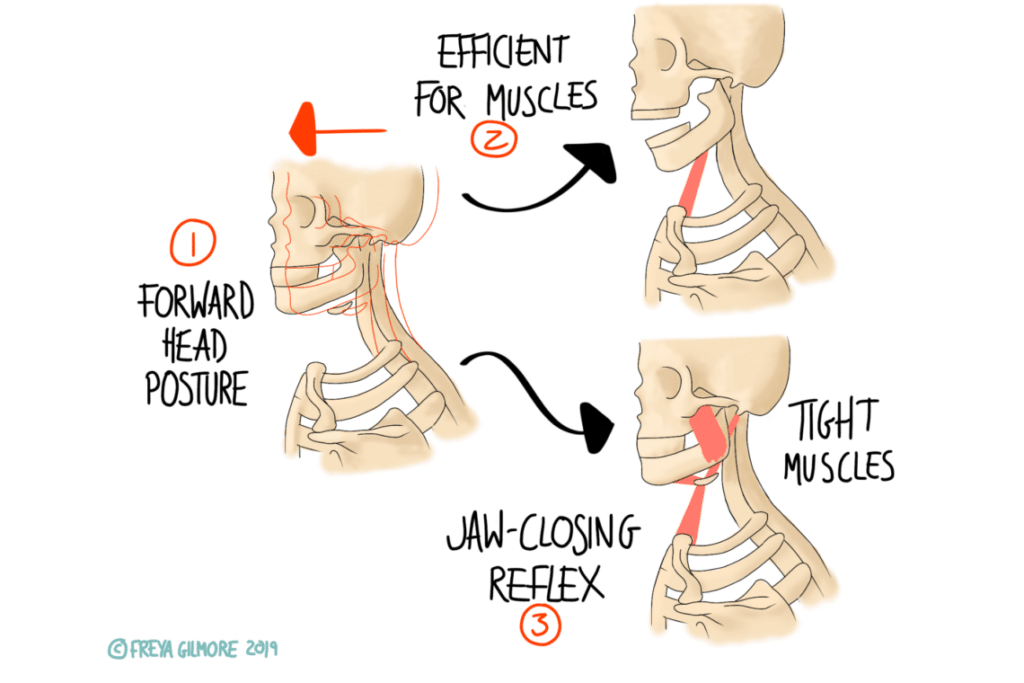


This complicated name simply refers to the mouth (stoma-) and the jaws (-gnath). Osteopaths look at the stomatognathic system with particular interest in its relationship with the rest of the body. It might come as a surprise that the two have much bearing on one another, but it can be a relevant consideration when getting to the bottom of your problem. It can be especially significant with neck and shoulder pain, or some headaches.
The image above shows the demands placed on the jaw muscles by slouching.
The front of the neck is stretched to keep the head up
This would pull the mouth open, but…
A reflex tightens the muscles around the jaw to keep the mouth closed
These muscles that tighten up are the same that might be tight if you clench or grind your teeth. While the muscles on the front of the neck are stretched, those on the back are working hard. The muscles right at the top of the neck, at the base of the skull, contract to raise the head. They are only small, so can be overworked quickly. It is often these that are involved with cervicogenic headaches. Treating these muscles might provide symptomatic relief, but will not solve the problem if the slouching remains.
Often, when we examine someone who struggles to sit up straight, we find two things. Firstly, the muscles on the front of the shoulders and chest are tight and shortened. Secondly, the muscles of the upper back that work against those tight ones are weakened. In the simplest terms, the plan here is to relax and stretch the muscles of the front, and then strengthen the upper back muscles. When we look at an individual, we might find that there are additional areas to work on in terms of mobility. If you’ve been stuck in a hunched over position, the base of the neck will have had to overwork to compensate for lost movement. There might also be stiffness in the joints around the shoulder, such as those at either end of the collar bone.
We look at these findings as part of the larger picture, aiming to identify and manage each one to allow the whole body to move more efficiently. In managing these symptoms, you may find that other minor problems resolve themselves too, such as tension that was affecting your breathing.
Your osteopath will evaluate the problem as a piece of the whole body puzzle. A detailed case history at the start of your first appointment will help us to get a better understanding of the factors at play. Sometimes correcting a slouched posture is as simple as improving the balance of muscles as mentioned above. If the problems originate from the stomatognathic system, and especially the alignment of teeth, we may want to work alongside your dentist to solve the problem in its entirety.